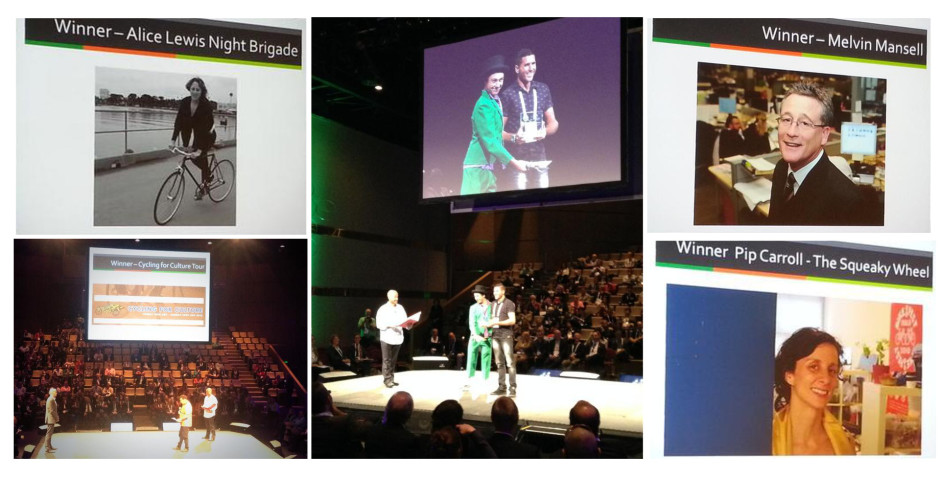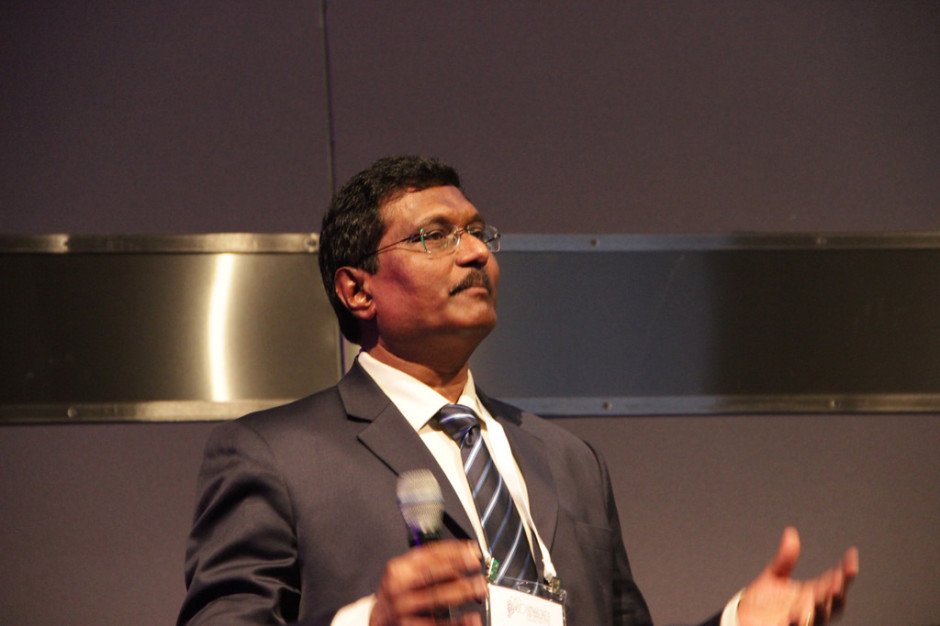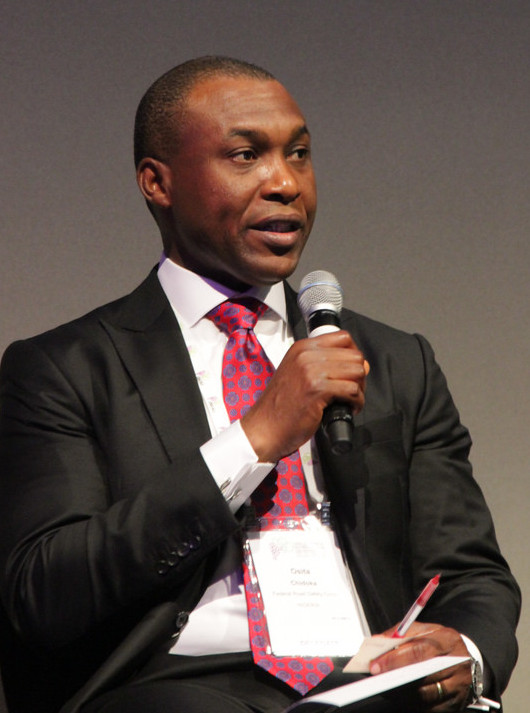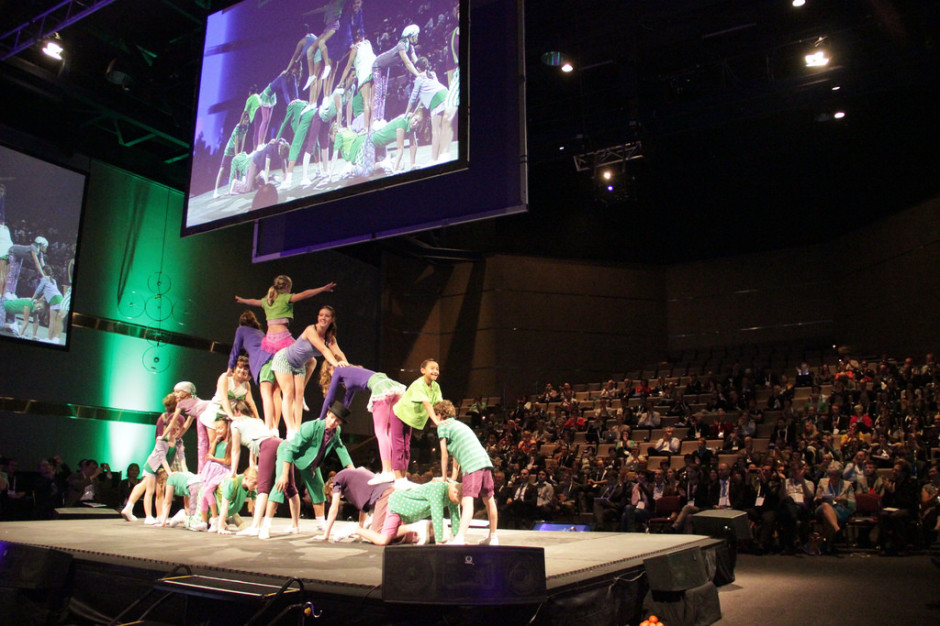
Velo-city 2014 Day 1 round-up - Tuesday 27 May
We're delighted to present you our first news round-up from the Velo-city Global conference here in Adelaide. There will be one edition per day for the rest of the week during this special period: this way, you'll be able to catch up on all the news from the world's premier cycling convention. This is a news digest - click the 'more' links if you're looking to follow the action more closely on our special Live website and, naturally, on social media.
Here is a selection of what's been happening at #VCG14:
- The Velo-city 2014 Press release is out!
- Luminaries award
- Efforts to promote cycling in India
- Getting Africa on a bike
- Pedelecs: Are we giving cycling a boost with e-mobility?
Velo-city 2014 Press release
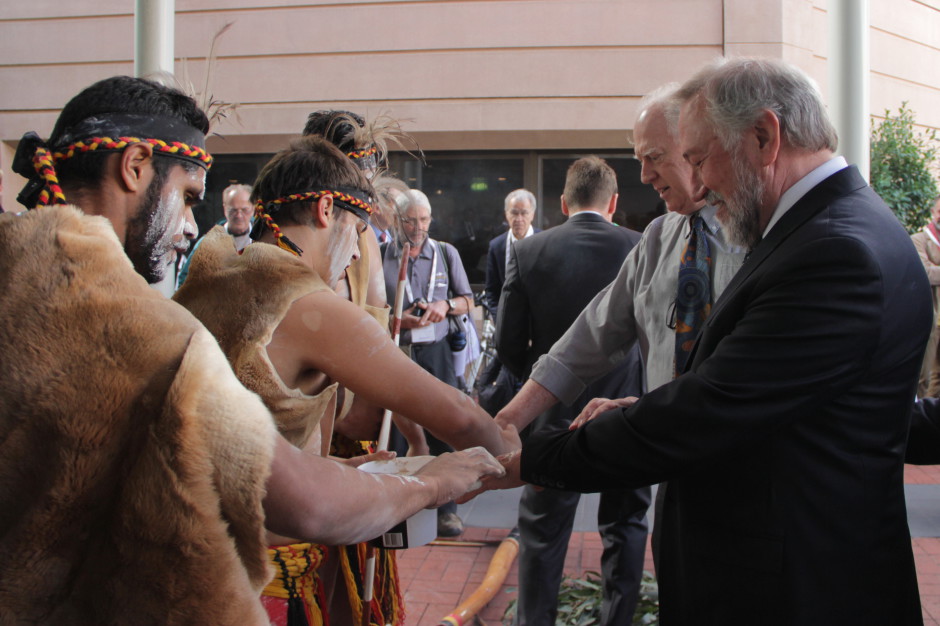 ECF President Manfred Neun receives a Kaurna welcome at the opening ceremony of Velo-city Global 2014
ECF President Manfred Neun receives a Kaurna welcome at the opening ceremony of Velo-city Global 2014
Our press release for Velo-city 2014 is out now!
Velo-city Global 2014, the world’s biggest cycling conference, kicks off in Adelaide with a spectacular programme covering all trending cycling topics and over 600 participants from all four corners of the planet.
The Luminaries Awards!
The afternoon plenary session at Velo-city saw inspirational leaders take to the stage to share their worldview on cycling. Janette Sadik-Khan, former cycling Commissionner for New York City, showed us that there is always room for developing cycling, and if you give citizens the opportunity to cycle, they'll "vote with their pedals"! Budgetary constraints are not an excuse, as it emerges that the cost of cycling infrastructure in New York only amounts to 1% of the total transport infrastructure of the city. We're even celebrating the one year anniversary of the Citibikes public hire scheme - Happy birthday!
The session was followed by much-anticipated Cycling Luminaries awards in the categories of Cycle Chic, behaviour change, and Leadership. The Cycling Luminaries Awards celebrate the ideas and people that are driving the future of local, national and international cycling cultures. Two prior awards had been distributed at the Velo-city opening ceremony. Congratulations to all the winners!
First nations: The Cycling for Culture Program
Cycling for the next generation: Mark Allen
Pimp my bike - Cycle chic: Alice Lewis (Night Brigade)
Bike culture and behaviour change: Pip Carroll (Squeaky Wheel)
Leadership: Melvin Mansell
Insights from the Hyderabad Bicycling Club
DV Manohar from the Hyderabad Bicycling Club addressed conference participants in one of the afternoon’s sessions, “Cycling in developing and emerging economies”. The Club, of which he is President, is a new member of ECF and we were delighted to hear him speak about the challenges and opportunities that arise from the development of cycling in urban contexts that are sometimes entirely different to those we are accustomed to in the Western hemisphere. The first major difference in India, Manohar explained, is that we are looking at everything on an entirely different scale. For instance, in less than 20 years, India is expected to be the most populated country in the world, with 250 million extra inhabitants between now and 2035. This counts for 11 times Australia’s population! The mass-scale motorization that this brings about will make it the 3rd largest CO2 emitter on the planet.
But instead of the mobility consequences of this demographic explosion, it’s actually the health dimension that brought Manohar to create the Hyderabad Bicycling Club, composed of 5000 members via a web platform meet-up.
This private initiative is as exemplary as it is daunting. The focus is to get people to cycle to work, but also to organize social and leisure cycling events. Currently, cycling in India suffers from a huge image problem: it is regarded as a means of transport for the poor. Actually, this syndrome is not unknown: quite a similar image was attributed to cyclists in Europe in the mid-20th Century. But HBC’s President is quite optimistic – he believes the newly-elected government will take action in order to improve the situation of cyclists in India. To be continued then, and perhaps we’ll be able to hear some encouraging results at the next Velo-city Global conference in two years in Taipei!
In the meantime, హైదరాబాద్ స్వాగతం, Welcome Hyderabad!
Case-study: Africa
The “Cycling in developing and emerging countries” session participants also got a chance to hear the state of development for cycling in two African countries. First, Mr Osita Chidoka from the Nigerian National Road Safety Institute presented the National Cycling Strategy for Nigeria. This plan was been endorsed by political leaders and the associated budget for putting it into action is expected to be voted next year. So, what does it include? The main aim is to get Nigerians cycling by choice, at a rate of 15% by 2017. This is to be done by allocating 15% of the transport budget to infrastructure investments and behavioral change campaigns. The figures are very impressive, when you think that we heard Janette Sadik-Khan say that in New York, only 1% of the transport budget is invested in bike infrastructure! This is predictable, though – Nigeria and New York City are at radically different phases in the development of their mobility plans. Which puts this National Cycling Strategy in perspective: we applaud this vital plan that aims to put millions of Nigerians on their bike by the end of this decade!
To contrast with this top-down initiative, we heard from Mr Michael Linke who spoke about a different angle for cycling development in another African state, Namibia. He is overseeing the promotion of cycling as a ‘bottom-up’ initiative, where the focus was mostly on increasing road safety, but also to break with the cycling’s negative image as a transport mode for the poor. This echoes the feeling reported in India, and as we know, perceptions on cycling must not be underestimated. Despite many convincing arguments supporting cycling as a sustainable means of transport preconceived opinions often act as sturdy emotional barriers against large-scale uptake of this beautiful form of transport - and not just in Developing and emerging economies. This Velo-city session (and others over the next few days) shows just how beneficial a wide-ranging conference is to our future mobility: more insights from around the world, more stories, more consensus-building. More cycling!
Session on Pedelecs/e-bikes: Are we giving cycling a boost with e-mobility?
Three excellent speakers spoke about pedelecs, their evolution as a now firmly established mode of urban transport in Australia, Europe and Asia and the effect on traditional models of urban mobility.
Bernd Hildenbrandt from the Austrian Road Safety Board (KFV) spoke about some of the safety issues surrounding pedelecs. Applying mathematical models to current road safety data that is available in Austria, he thinks that there will be a slight rise in the number of casualties with a rise in pedelec use. Interestingly his research showed that the average speeds of pedelecs were not that much more than conventional bicycles. He thinks that it is not the vehicle which causes road safety problems rather that it is the users themselves, particularly elderly and novice users. He recommends some form of voluntary training.
An always knowledgeable figure on pedelecs at Velo-city conferences Ton Daggers, owner of IBC Cycling Consultancy, spoke about why people should not fear pedelecs and saw them being an excellent companion to traditional cycle use. He saw the inevitable tide towards further pedelec use as evinced by the fact that many car companies were getting interested in designing and manufacturing pedelec use as a response to the pedelec as a contender for the motor cars place in urban areas. He showed how the pedelec has been integrated into transport policies to promote commuter traffic by bicycle and reducing short car trips.
Marilyn Johnson from Monash University studied pedelecs as a way to overcome some of the perceived hurdles to cycle use, including lack of fitness, distance, being too sweaty on arrival at work etc. Her research showed that the pedelec was able to overcome almost all of the traditional hurdles to cycling, except for the safety issues. Even on the issue of safety some felt more comfortable knowing that they had the extra power to deal with motorised transport. Her research has also shown that the shift to pedelecs is coming from the motor car and not from other bike riders, public transport users or walkers. She thought that pedelec use could be a great bridge from motor vehicle use to active forms of transport.
Questions from the audience brought about discussions on whether there was a need for different infrastructure; the impact of this mode of transport on elderly/disabled people; the relationship between hilly areas and pedelec take-up.
The session raised some interesting, not entirely expected, conclusions. Interestingly the safety issues seemed to point to factors of population rather than an inherent danger of the pedelec itself. It also seemed to fill in many of the gaps or hurdles that have traditionally been difficult for cycling promotion and uptake.
Performance of the day
Quote of the day
"in God we trust... anybody else, bring data"
- Janette Sadik-Kahn speaking about the quadrupling of cycling rates in New York city.
- Log in to post comments
Contact the author
Recent news!
Upcoming events
Contact Us
Avenue des Arts, 7-8
Postal address: Rue de la Charité, 22
1210 Brussels, Belgium


